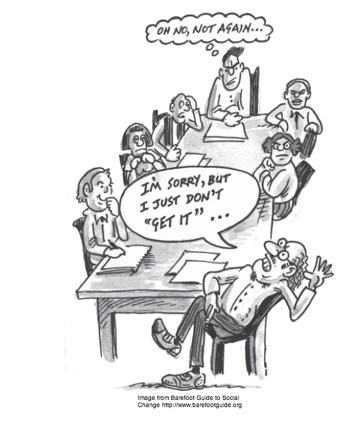Missing Social Context Cues

Researchers such as Kiesler and Sproull (Kiesler and Sproull, 1992) have focused much of their work on the social context of communication. They argue that people use social context cues to adapt to a communication situation. Artifacts, such as personal appearance or a seating arrangement, provide static cues. Behavior gives dynamic cues: nodding, signaling, and timing. People are thought to need social cues to adapt to the hierarchical and other social needs of the situation, and a lack of such cues leaves them self-centered, unregulated, and unable to adapt to the roles and norms of the situation.
Available social context cues are limited in computer-mediated communication, in fact, "all communication technologies attenuate to at least some degree the social context cues available in face-to-face communication" (Kiesler and Sproull, 1992, p.103).
Because of absent social context cues, social inhibitions are reduced. Behavior becomes more uninhibited, and people display less sociably desirable behavior. It appears that the lack of cues causes people to become less concerned with others, and reduces the need to be liked by them. This kind of behavior can exacerbate conflict.
Licensed under the Creative Commons Attribution Non-commercial No Derivatives 3.0 License
For Educational Use Only